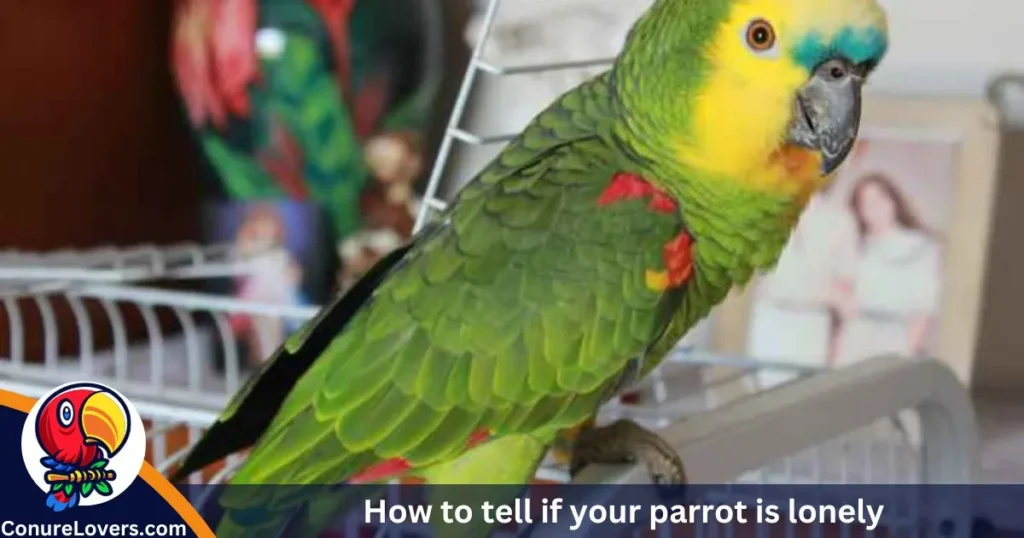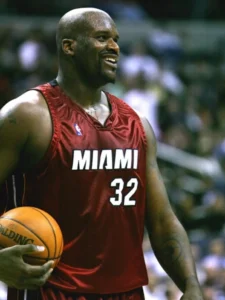Do Parrots Mate For Life? Animal friends team up to have babies and stay alive – that’s the deal. Parrots, the cool social birds they are, also look for pals when it’s time to pick a mate. But, wait up, they can be picky and might not click with just anyone. That might be a bit tricky if you’re planning to be a parrot parent or can’t spend a ton of time chilling with them.
Now, parrots and parakeets are known for being monogamous, but there’s more to it. Is it all about falling head over feathers for one partner and staying true forever, or is it more like finding a buddy for the baby-making season? And, here’s a tough one – if a parrot’s mate takes off to the great bird beyond, can they find a new feathered friend, or are they stuck being single? Can we set up dates for our parrot pals?
Understanding these ideas helps us figure out if our pet parrots will stick with one mate or if they’ve got a chance at love again. It gives us a sneak peek into their social antics and lets us set up the perfect love nest for their emotional happiness.
How Parrots Choose A Mate
Mating is a big deal in any relationship, whether you’re talking about humans or our feathery friends, the parrots. It’s all about passing on the good stuff to the next generation and making sure those little ones can keep the family going.
For parrots and parakeets, mating is mostly about making babies rather than just having fun. So, how do these lovely birds choose their mates, and what goes into making that choice?
Well, there are some things that might seem ordinary to us but are actually like love signals for these beautiful birds. These traits give clues about a potential mate’s good genes, overall health, and ability to survive.
They’re the reasons why a parrot might decide to cozy up to a partner or not. Here are some things that can influence a parrot or parakeet’s choice of a mate:
Plumage:
Parrots have super sensitive eyes that can see more colors than we humans can. So, even though they might all look the same to us, parrots and parakeets can spot the tiniest differences in color intensity.
This is a big deal for them because it signals good parenting skills, good health, successful breeding, and immunity.
Showmanship:
In the animal dating game, it’s often the guys who make the first move. Female parrots and parakeets like a mate who can do more than just look pretty. For example, male kakapos pick out a prime spot and put on a show during mating season, making loud calls and hopping around.
The females choose the ones who can really strut their stuff. Female budgies are into guys who can solve problems – it’s not just about the looks!
Birdsong:
Just like humans use music to woo their partners, in the bird world. A strong singing voice is a big deal. A male parrot or parakeet with a good set of pipes is seen as healthy, immune to diseases. And a successful partner – all important traits for making baby birds.
Regurgitation:
For female parrots and parakeets, the ultimate sign of a good partner is his ability to regurgitate food. Weird, right? But it’s true. By sharing food like this, the female can tell if the guy will be a good provider for her and their future chicks.
If a male can regurgitate a decent amount of food. It’s a strong signal that he’s up for the job of taking care of the family.
On top of all this, having plenty of food around. And a safe place to call home are also big signs that a parrot is a good catch as a mate. Love is in the air, or should we say, in the trees!
Read Also: Cayenne Pepper Powder: A Natural Solution for Wound I Perrot
Till death do us part, or not? – the parrot concept of monogamy

Now that we’ve got a good grasp of how and why parrots and parakeets connect with each other. And what influences their choices, let’s dive into how long their bonds can last with their chosen mates.
It’s widely known that these birds are monogamous, but when we think of monogamy. We often picture the human idea of sticking with a partner for life – the till death do us part thing. Parrots and parakeets, however, follow a different kind of monogamy called social monogamy.“
Social monogamy means that mates might stick together for all mating seasons. Only until their chicks are grown enough to be independent. It’s mainly about child-rearing, and it’s strictly tied to parenthood. Both parents equally share the responsibility of raising their chicks because parenting is a big job for these birds.
One partner incubates the eggs in the nest while the other hunts for food for the family. Including the little ones once they hatch. During nesting, one or both parents need to be around to keep the eggs warm until they hatch.
Parrots and parakeets are pretty affectionate birds and don’t really mind whose chicks they’re raising. So, a male parrot might mate with a female from another pair just for reproduction purposes. And the chicks could end up being cared for by a different dad.
This makes it a bit tricky to tell if all the chicks in a nest belong to a specific pair. Especially in larger aviaries with more than two couples. While some parrots and parakeets might stick together as a mating pair for as long as both partners are alive. It’s rare to see a bird completely lose its willingness to form a new mating bond. If the other partner is absent or passes away. Lovebirds, indeed!
In the unfortunate event of death
Death is an unavoidable part of life, and losing someone you care about is always tough. Whether the relationship was exclusive or open.
Even though parrots and parakeets are “socially monogamous,” the loss of a mate can really shake them up.
If the surviving partner has formed a healthy bond with its owner. Dealing with grief can be made easier by giving attention, playing, and interacting with the bird.
But, if the surviving partner only bonded with the now-deceased mate, it can be a serious issue. These birds rely on each other for grooming and companionship.
In such cases, it might take several months to pull them out of the grieving phase and back to their usual cheerful selves. The time frame, however, depends on the parrot species and whether it can find other interesting things in the environment to shift its focus from the loss.
It’s recommended not to push them into forming new bonds right away, as it can be challenging and frustrating for both parties.
How to tell if your parrot is lonely

Can you tell if your parrot is lonely and might need more bonding time with you. A new friendship that could develop into a suitable pair bond? Identifying this is crucial as it guides your next steps in caring for your pet.
Similar to humans experiencing grief, loneliness, or depression, parrots and parakeets show changes in behavior appetite. And overall demeanor that could indicate deep-seated loneliness or sadness. For example, they may become unnecessarily irritable or shy. Here are 9 things to look out for:
- Change in Behavior, Appetite, and Overall Demeanor: Loneliness, depression, and grief can lead to behavioral changes. Such as being irritable and shy.
- Reduced Appetite: Your parrot may show signs of a loss of appetite, either suddenly or gradually, depending on the triggers.
- Stress Bars: These are lines that run crosswise through a parrot’s feather. Resulting in a change in width of the plumage. Stress bars may appear due to poor nutrition. But loneliness and stress-induced loss of appetite could also lead to their appearance.
- Irritability: Normally upbeat and interactive, lonely or stressed parrots may become moodier and react angrily. Especially during events like the sudden absence or death of a mate coinciding with their mating season.
- Destructive Behaviors: Lonely birds may become destructive, tearing, scratching. Chewing on items as a way to cope with the absence of a companion or owner.
- Hiding: Lonely parrots may hide, especially if they haven’t bonded with you, and their trusted companion is no longer around.
- Lack of Enthusiasm: Lonely parakeets and parrots may show less enthusiasm, remaining in their cage. They may be less willing to engage in training and other activities, potentially being unusually loud and refusing attention.
- Change in Vocalization: If your typically talkative bird becomes unusually quiet without any physical problems. It could be a sign of stress, loneliness, or psychological issues like depression. Some species may become more vocal than usual, making loud noises to signal distress, pain, irritation, boredom, anger, or loneliness.
- Feather Plucking: Feather plucking, common in species like cockatoos and lovebirds, can be a serious sign of loneliness. Keep an eye out for dry patches where feathers should be. If unsure of the cause, consult a veterinarian.
Being observant is crucial as feather plucking may indicate various issues. And seeking veterinary advice is advisable if you’re uncertain about the cause
Helping a lonely parrot

In the event that you discover that your parrot or parakeet is lonely. Here are some things you can do to help:
1. Spend more quality time with it: Form a better bond by letting it play with you.
2. Introduce lots of toys: Offer them space to channel their anger instead of destroying valuable things.
3. Get it a companion: Ensure they are placed in different cages. While this may reduce boredom, it doesn’t guarantee that they will become friends or get along eventually.
4. Increase training frequency: Talk to them more regularly. Leave music playing or keep the TV on. When you leave the house to help keep them entertained and lighten their mood in your absence.
5. Be mindful of touch: When attending to them, be cautious about how and where you touch them. Parrots and parakeets might see their human owner as a potential mate if touched in their “mate-only areas.” Avoid tickling or touching under their wings, chest, back, and toward the rear end of their tail. As these actions can be interpreted as mating cuddles.
Sometimes, girl birds might do a squatting pose. And boy birds might try to climb on things or even on hands and fingers. Some birds might throw up for their owners, but that’s usually not good. Because it can make it hard for them to make friends and find a special bird friend. Ensure that your touches are generally restricted to their head and neck.
Final Notes
The most crucial point to remember is that monogamy in parrots and parakeets. Strictly revolves around parenting, not love or attraction in the way humans define it. So, if your parrot or parakeet has lost a mate and is feeling lonely. Don’t be confused about what your next line of action should be.
Getting it a new companion could be a good idea, as they might eventually get along and become a couple. Ensure that you do not pressure or force them into bonding. As that choice can only be made by the pair involved. Besides, consider spending more quality time with your parrot to help them get through the loss of a partner.

Meet James Wilson, your go-to Conure Care Expert at “Conure Lovers.” I’m here to help you create a happy and healthy life for your feathery friend. Let’s explore the world of conure companionship together!












